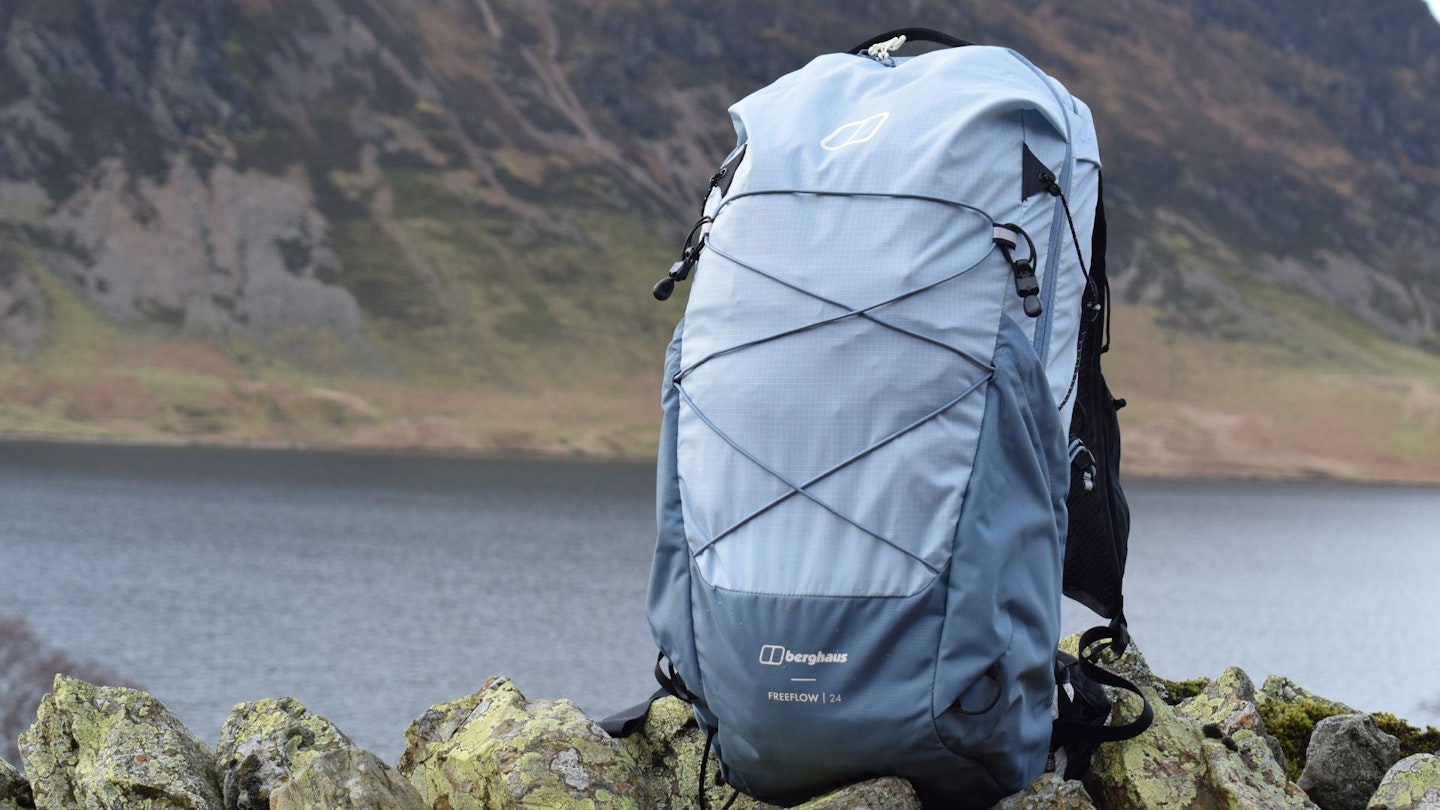Berghaus introduced the first Berghaus Freeflow backpack in 1996. It was an early pioneer in a new genre of ‘ventilated backpacks’ and it proved very popular. Now, Berghaus’s gear boffins have taken their time to re-imagine and modernise the design. The end result of this graft is the new Berghaus Freeflow 24 daypack.
It has been “engineered to deliver genuine evolution in frame design, suspending the pack away from the back without compromising on stability or packing space”. The idea is to combine the benefits of the two main backpack back systems in one product. This is the theory.
While suspended mesh (trampoline-style) back systems offer amazing breathability, they often compromise on stability, storage space and ease of packing. In contrast, contact back systems – where your back is always in direct contact with a frame sheet or panel – feel stable with a close-to-the-body fit, but they can be very sweaty.
The Freeflow aims to “provide the advantages of both mesh and contact back systems, while minimising the respective disadvantages”.
 LFTO
LFTOwww.berghaus.com
Pros
- High-tech back system
- Excellent breathability/stability balance
- Good for heavier loads
- Great pockets
Cons
- Heavier than many rivals
- Relatively expensive
- No mesh stash pocket
| Weight | 1.28kg |
| Volumes | 24L, 30L, 30+5L |
| Materials | Recycled 210D nylon w/ PFC-free PU coating |
| Load capacity | Not stated |
Back system: panel, frame, and harness
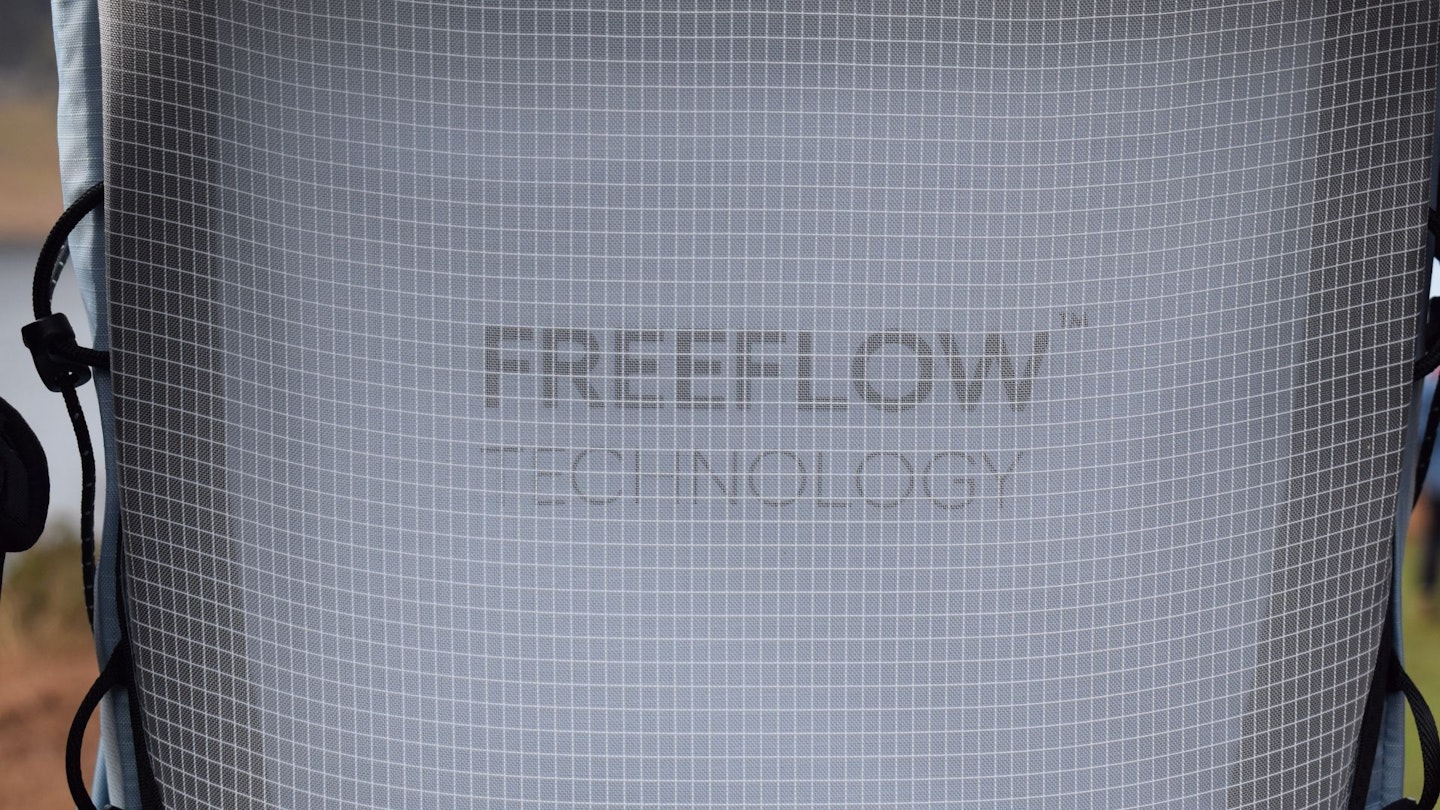
Let’s start with the harness. The shoulder straps and hipbelt are comfy and hug the body well. They can be adjusted via load lifter straps, a sternum strap (with adjustable height) and, of course, the waistband. The shoulder straps and hipbelt are quite minimalist and not highly padded, but they still work well.
The black frame is made from a thick, strong plastic (polypropylene) with an ergonomic design and gently curving rectangular shape. It provides a lot of structure and solidity to the pack, with just a touch of flex.
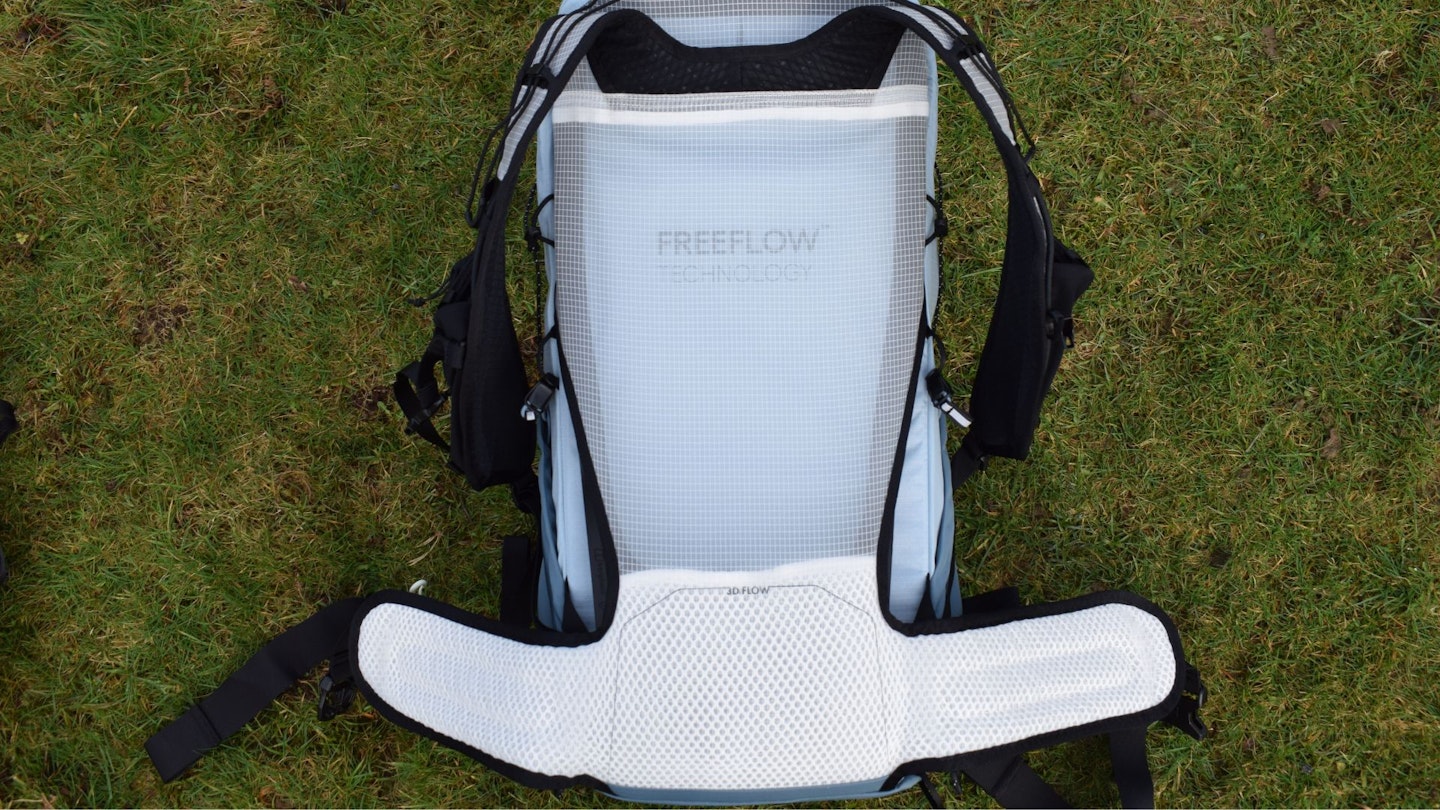
Over this frame is a taut, high-tension, transparent material of gridded squares, against which your back rests. This material is a nylon “mono-mesh” – a clever fabric with a high tear strength, good abrasion resistance, impressive airflow and a dry feel, because it doesn’t hold moisture.
In-use, the nylon mono-mesh feels strong and structured, and is way less flexible than other suspension meshes. Between the nylon mono-mesh and the bulk of the pack is a consistent air gap of between 2cm and 4cm, providing excellent airflow and ventilation to minimise sweating.
Collectively the frame and the back panel provide an excellent carrying experience, particularly for slightly heavier loads. The carrying experience is quite firm, straight and structured, but for many this will work well, and the weight distribution is top-notch.
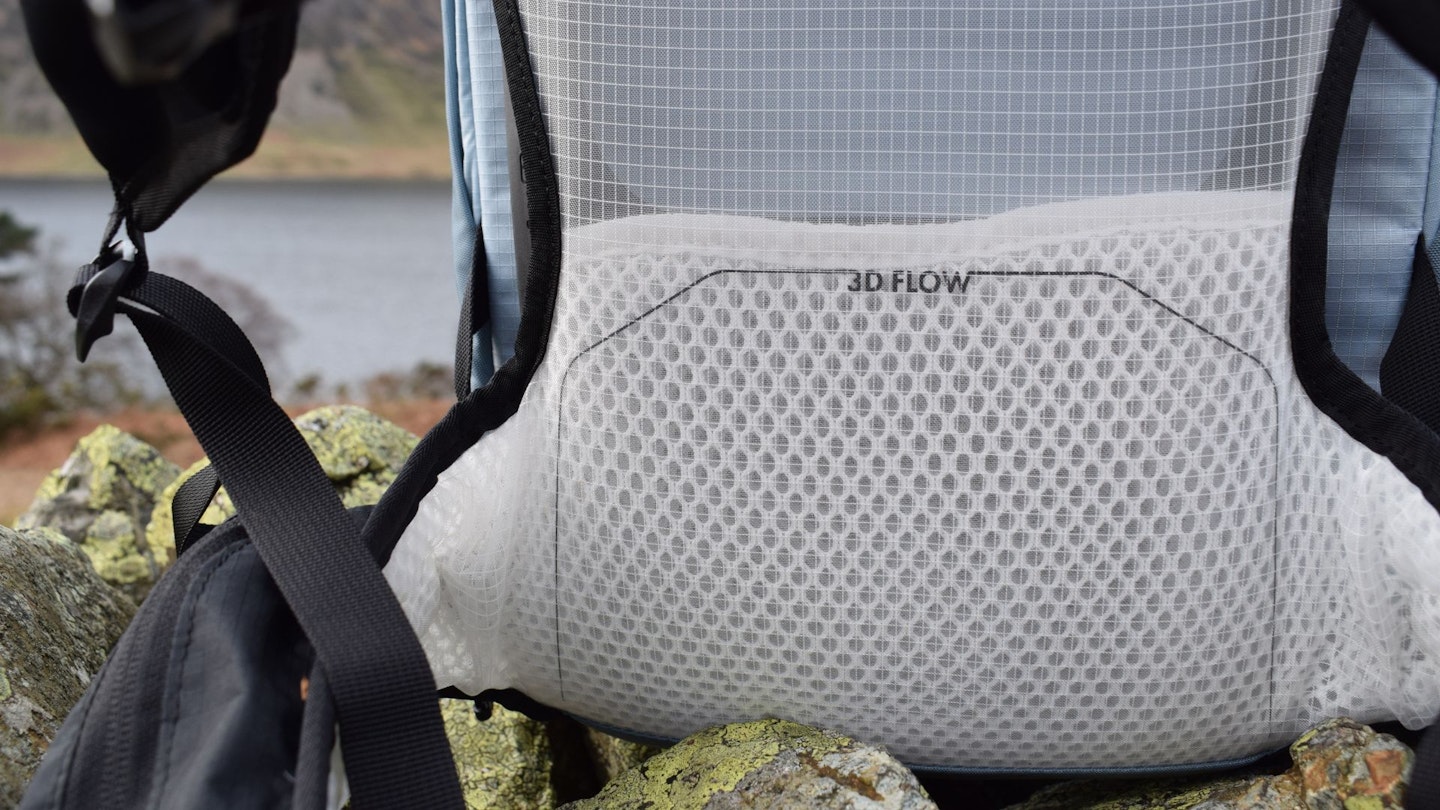
One other feature to note is that, at the base of the frame, you get a lumber pad – featuring a honeycomb-like structure of padding – that provides extra support for your lower back. This is a nice touch and enhances comfort levels.
Back length and sizing
The Berghaus Freeflow 24 is classed as unisex and available in one size. For us (5ft 9” tall) the pack fitted fine during our test hikes. The back system in the Freeflow 24 is non-adjustable either, so either it'll fit or it won't. However there two larger pack sizes in the range – the Freeflow 30L and 3D Freeflow 30+5L – with the 3D Freeflow 30+5L being available in small and regular sizes and does have and adjustable back panels.
Volume, shape, and weight

The Berghaus Freelow 24 has – you guessed it – a 24 litre capacity, but it’s also available in a 30 litre option. The 24-litre version weighs 1,280g while the 30-litre version is 1,480g.
A weight of 1,280g is relatively heavy for a 24-litre backpack. Many rivals come in under 1kg. The extra weight does provide extra stability and support compared to lighter packs, but for many hillwalkers hellbent on going as light as possible, the extra grams might be a deal-breaker.
The shape of the Freeflow 24 is pretty standard, but a tad more angular and straight-lined than others due to the stiff, rectangular frame. It has official dimensions of 58cm (height) x 29cm (width) x 18cm (depth).
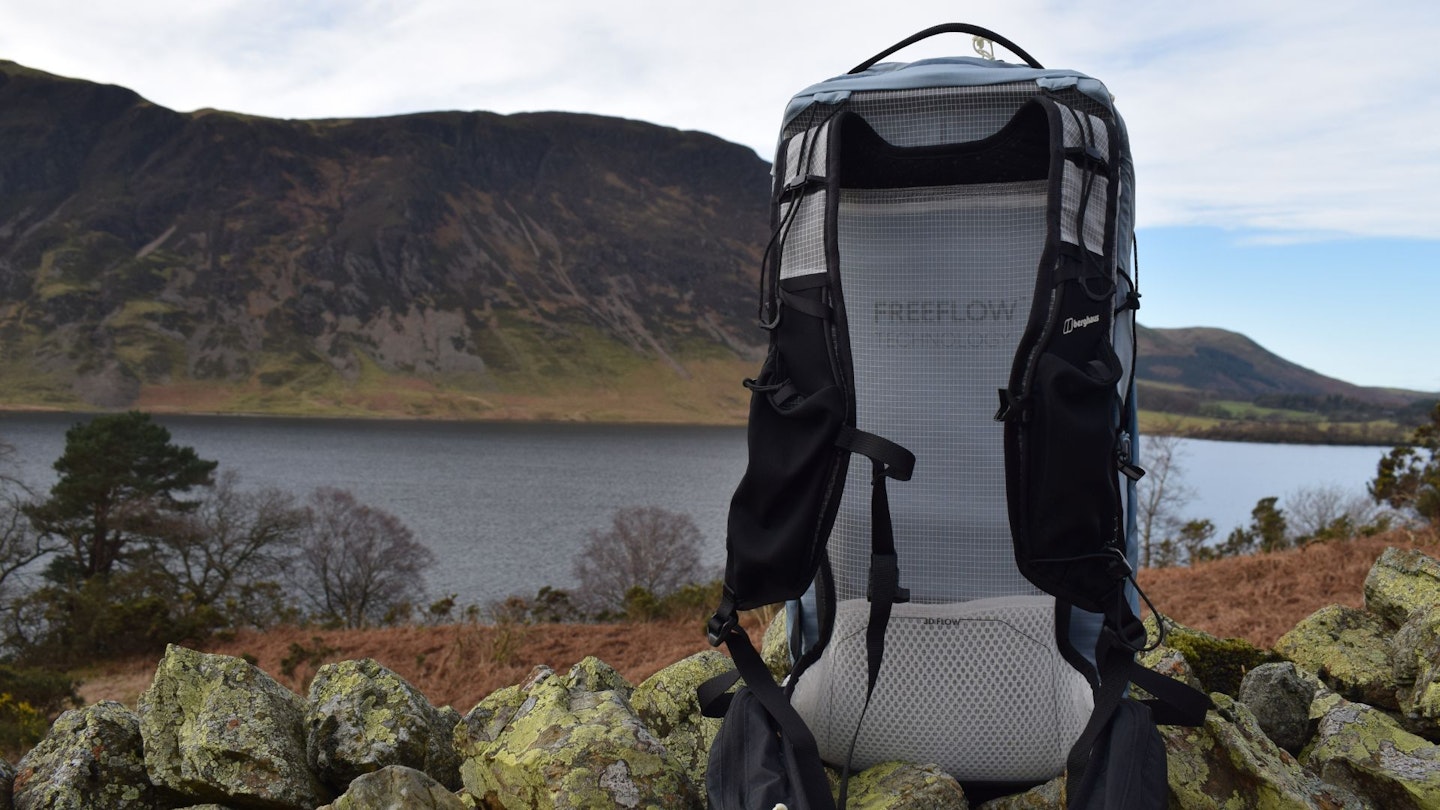
Features: lid, straps, pockets, weather protection
There is no lid on the Freeflow 24, nor any type of drawcord closure. Instead you get top-entry to the main compartment via a wraparound, two-way zipper shaped like an upside-down U. Berghaus call this zipper entry style “clamshell opening”.
It provides easy and simple access to the main compartment. The only drawback is that the top of the pack is more exposed to the elements and lacks the extra layer of rain protection you get with a traditional lid. You also don’t get any side entry on the Freeflow 24, but the wide mouth of the main zipper mostly negates any need for this.
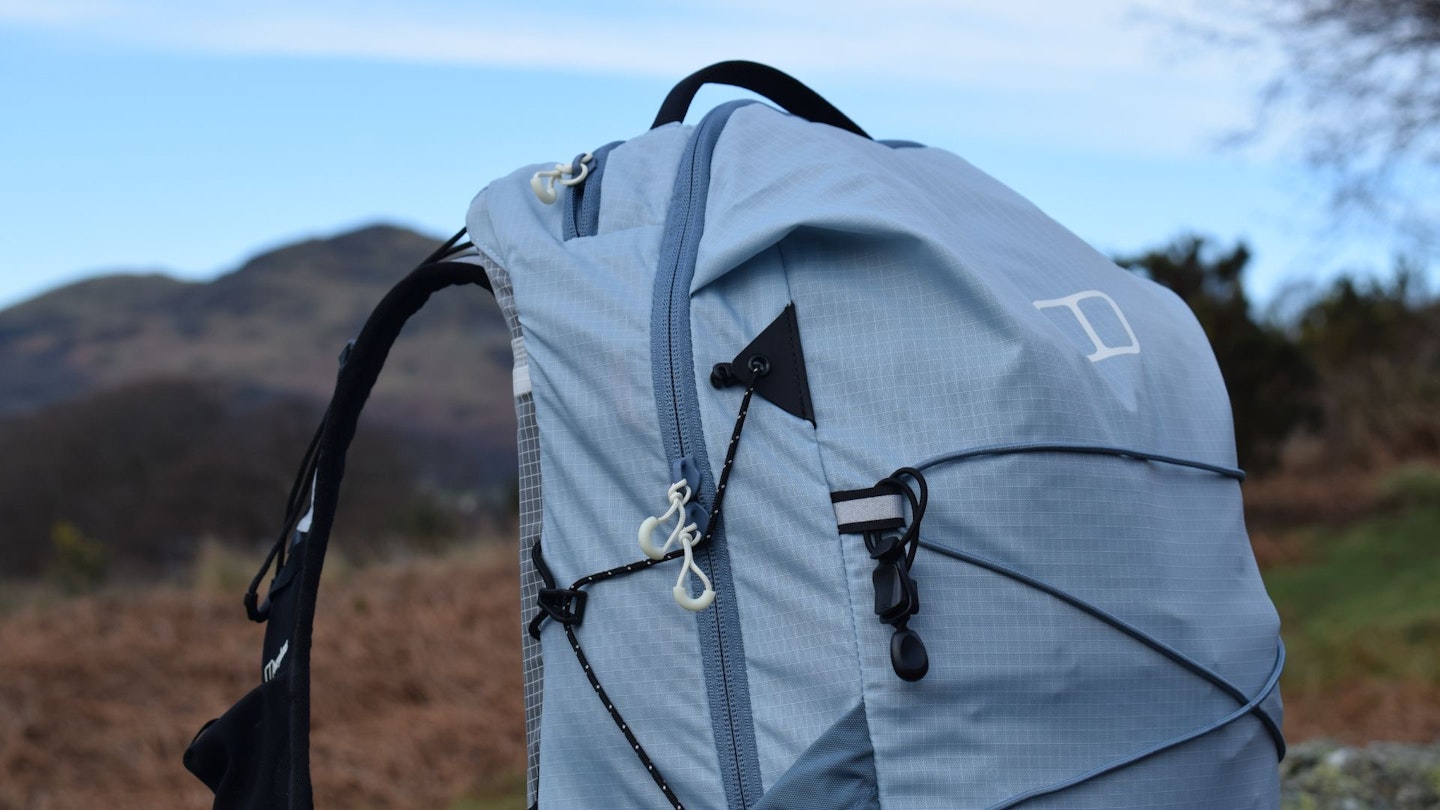
The main compartment of the bag is quite simple. There is a sleeve for a hydration bladder, and in the top right-hand corner of the pack is a slit for threading through the bladder’s hose. This enables you to secure the hose in place on a shoulder strap for easy access. A little fabric loop with a clip at the top of the pack’s interior can also be used to hold the hose in place internally – or used to hang other items of kit, if you so desire.

The other noticeable feature of the main compartment is a floating pocket, which can hang loose or be held down by little Velcro tabs. This pocket cannot be accessed internally. Instead it is accessed via an external, zippered pocket on the top of the bag. It is useful for keys and smaller items.
In terms of the bag’s exterior, a lot of the features you’d expect are present. On each side you get a bottle pocket big enough to house a 1L Nalgene. The pocket materials aren’t as stretchy or flexible as many other packs, so the pockets don’t adapt as well to your bottle shape and size. But having said that, we didn’t have any problems with the bottle pockets.
At the base of the pack, a Velcro tab opens to reveal an integrated raincover. This raincover is connected at all times to the backpack by a stretchy tab of fabric, thus ensuring it won’t blow off in the wind.

Across the front of the pack, you get a criss-crossing pattern of webbing cords, which work fine for securing a waterproof or spare layer, but they aren’t great. We’d prefer to see a mesh stash pocket, which works far better for stashing and grabbing items.
The pockets of the harness, however, are much better. You get two stretchy mesh pockets on the shoulder straps, as well as two zippered pockets on the hipbelt. All of these four pockets are big enough to take a large smartphone, for example, and offer varied and versatile on-the-go storage options. For storing trekking poles, you also get tabs and bungee cords on the front of the pack, which work well.
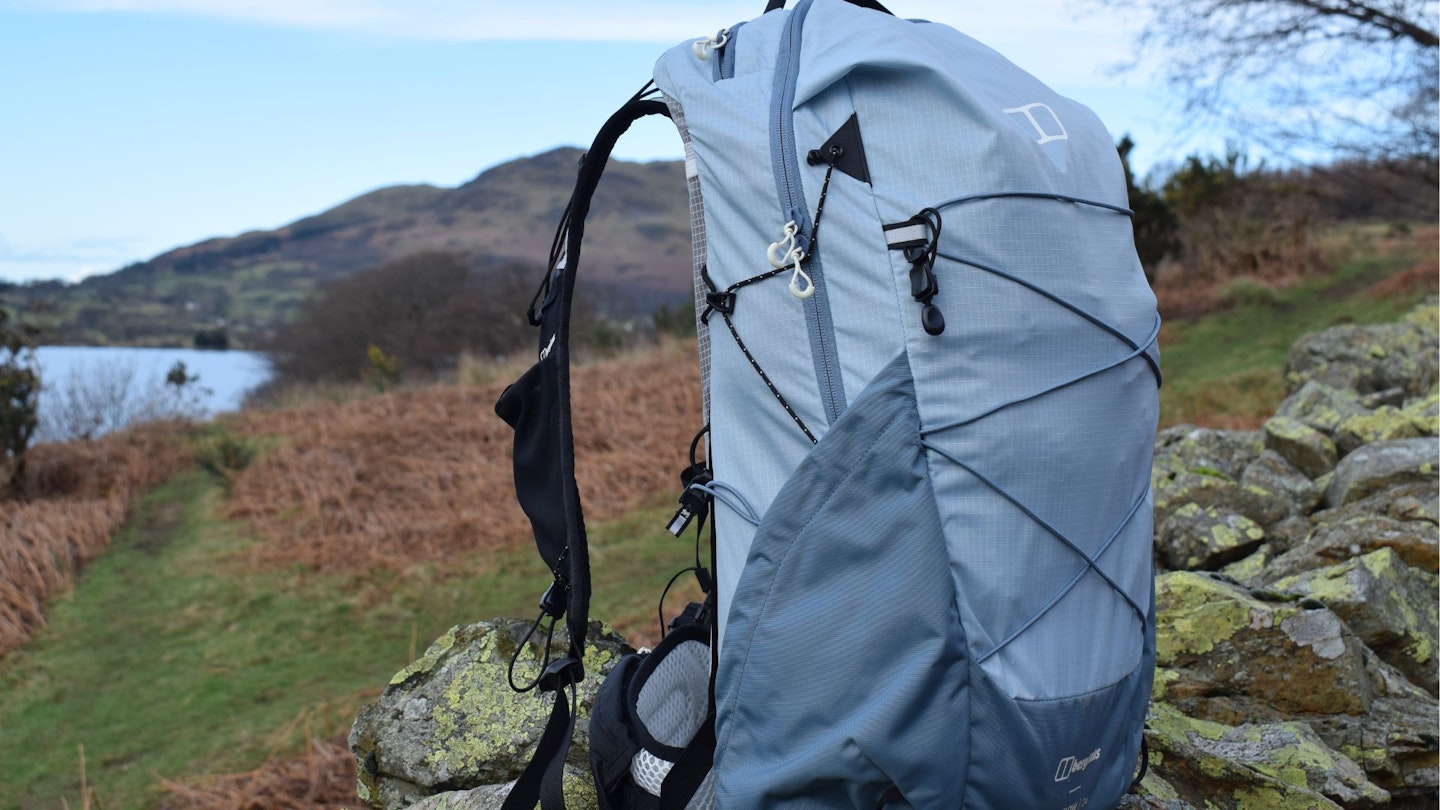
There are a few other features to note. The sternum strap has a handy whistle on its clip; reflective details enable you to be seen in the dark; and the pack’s compression system enables you to expand or contract the pack size, depending on the load you’re carrying. The main fabric used in the construction of the Freeflow 24 is a 100% recycled ripstop nylon with a PFC-free PU membrane to protect your contents against rain and snow.
Verdict

So in summary, does it work? Our judgement would be yes. This pack does feel like a fusion of the two back systems, mostly thanks to the taut, transparent, gridded material against which your back sits.
This delivers more structure and firmness than other suspension systems we’ve tested, and gives a closer-to-the-body, more stable feel. Yet breathability and ventilation are still very good, thanks to a sizeable air-gap between this panel and the bulk of the pack.
Ultimately we’d say you sacrifice a bit of ventilation (compared to other highly-breathable, suspended mesh systems from other models like the Lowe Alpine AirZone Ultra 26), but the trade-off is you get far better stability and structure.
How we tested the Berghaus Freeflow 24
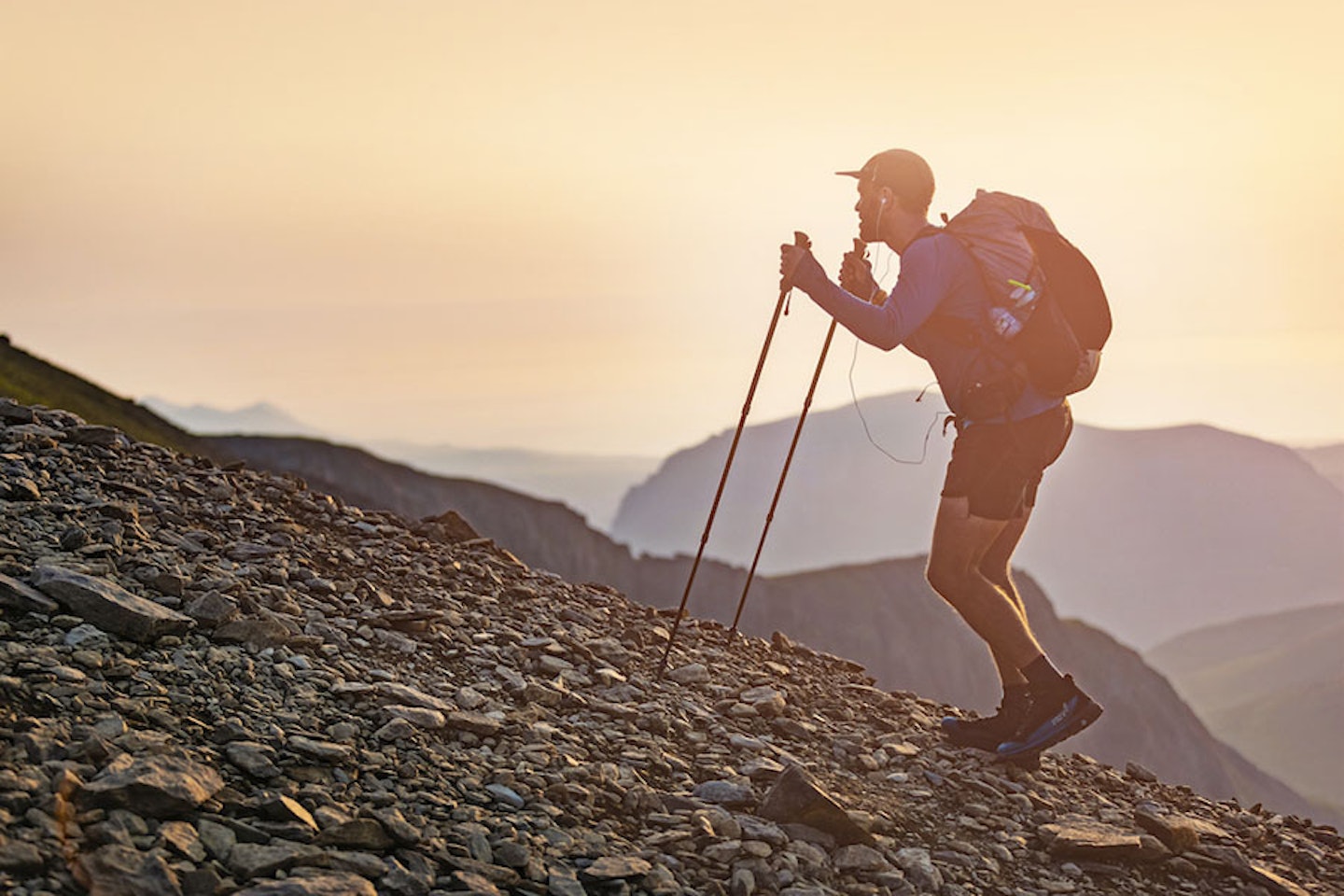
The Berghaus Freeflow 24 was tested and reviewed by long-time freelance reviewer James Forrest. A prolific peak bagger, and long-distance walker who’s one of the most high-profile outdoor writers in the UK, James always makes sure to give his gear a proper thrashing.
